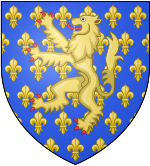
Heraldry is a discipline relating to the design, display and study of armorial bearings, as well as related disciplines, such as vexillology, together with the study of ceremony, rank and pedigree. Armory, the best-known branch of heraldry, concerns the design and transmission of the heraldic achievement. The achievement, or armorial bearings usually includes a coat of arms on a shield, helmet and crest, together with any accompanying devices, such as supporters, badges, heraldic banners and mottoes.

Earl of Clanricarde is a title that has been created twice in the Peerage of Ireland, first in 1543 and again in 1800. The former creation became extinct in 1916 while the 1800 creation is extant and held by the Marquess of Sligo since 1916.
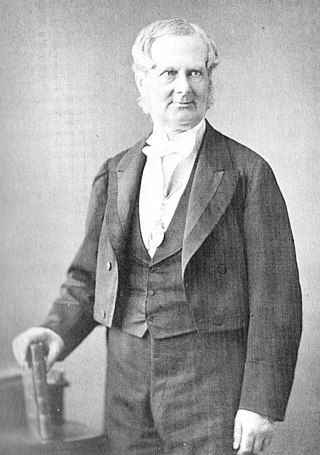
Sir John Bernard Burke, was a British genealogist and Ulster King of Arms, who helped publish Burke's Peerage.
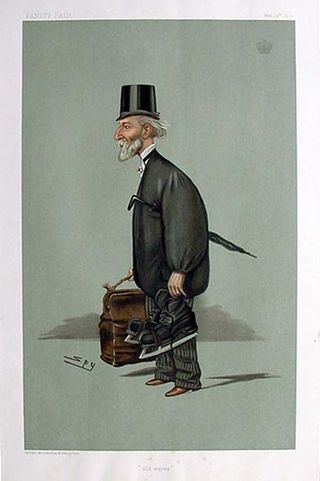
Hubert George de Burgh-Canning, 2nd Marquess of Clanricarde, styled Lord Hubert de Burgh until 1862, Lord Hubert de Burgh-Canning until 1867, and Viscount Bourke until 1874, was an Anglo-Irish ascendancy nobleman, millionaire, and politician who was the grandson of British Prime Minister George Canning.
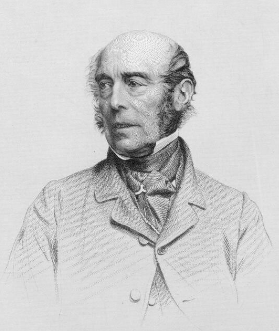
Ulick John de Burgh, 1st Marquess of Clanricarde, styled Lord Dunkellin until 1808 and the Earl of Clanricarde from 1808 until 1825, was a British Whig politician who served as British Ambassador to Russia (1838–40), Postmaster General (1846–52) and Lord Keeper of the Privy Seal (1858).
This is a list of the coats of arms of various county councils in England.

A roll of arms is a collection of coats of arms, usually consisting of rows of painted pictures of shields, each shield accompanied by the name of the person bearing the arms.

The law of heraldic arms, sometimes simply laws of heraldry governs the possession, use or display of arms, called bearing of arms. That use includes the coats of arms, coat armour or armorial bearings. Originally with the sole function of enabling knights to identify each other on the battlefield, they soon acquired wider, more decorative uses. Today they are used by countries, public and private institutions or individuals. The first laws regarding arms were written by Bartolus de Saxoferrato and the officials who administer these matters today are called pursuivants, heralds, or kings of arms. The law of arms is part of the law in countries which regulate heraldry, although not part of common law in England and in countries whose laws derive from English law. In most European countries without monarchies, much like in the United States, there are no laws against assuming arms, with the closest legal authenticity mechanism being a pictorial copyright protection.
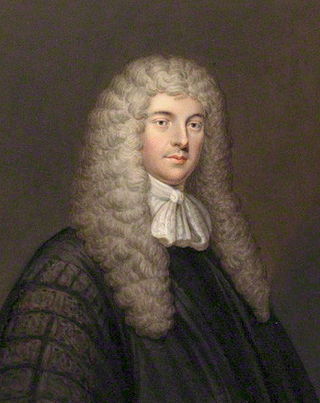
Paul Foley, also known as Speaker Foley, was the second son of Thomas Foley of Witley Court, the prominent Midlands ironmaster.

John Guillim of Minsterworth, Gloucestershire, was an antiquarian and officer of arms at the College of Arms in London. He is best remembered for his monumental work on heraldry, A Display of Heraldry, first published in London in 1610.

In heraldry and heraldic vexillology, a blazon is a formal description of a coat of arms, flag or similar emblem, from which the reader can reconstruct the appropriate image. The verb to blazon means to create such a description. The visual depiction of a coat of arms or flag has traditionally had considerable latitude in design, but a verbal blazon specifies the essentially distinctive elements. A coat of arms or flag is therefore primarily defined not by a picture but rather by the wording of its blazon. Blazon is also the specialized language in which a blazon is written, and, as a verb, the act of writing such a description. Blazonry is the art, craft or practice of creating a blazon. The language employed in blazonry has its own vocabulary, grammar and syntax, which becomes essential for comprehension when blazoning a complex coat of arms.
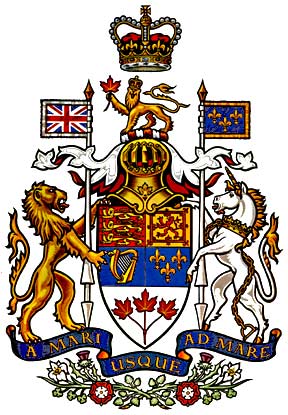
Canadian heraldry is the cultural tradition and style of coats of arms and other heraldic achievements in both modern and historic Canada. It includes national, provincial, and civic arms, noble and personal arms, ecclesiastical heraldry, heraldic displays as corporate logos, and Canadian blazonry.
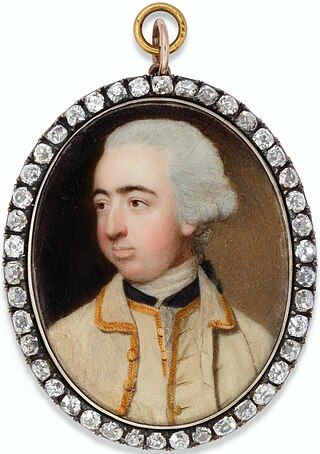
Henry de Burgh, 1st Marquess of Clanricarde, KP, PC (Ire), styled Lord Dunkellin until 1782 and The Earl of Clanricarde from 1782 until 1789, was an Irish peer and politician who was MP for County Galway (1768) and Governor and Custos Rotulorum of County Galway (1792–97).
Ulick Canning de Burgh, Lord Dunkellin was an Anglo-Irish soldier and politician who served during the Crimean War and was Military Secretary to the Viceroy of India and MP for Galway Borough (1857–65) and County Galway (1865–67).
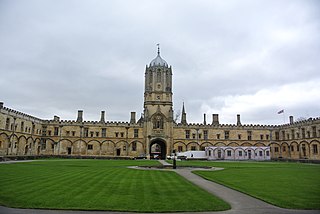
Michael Burke, 10th Earl of Clanricarde, styled Lord Dunkellin until 1722, was an Irish peer who was Governor of Galway (1712) and a Privy Counsellor in Ireland (1726).
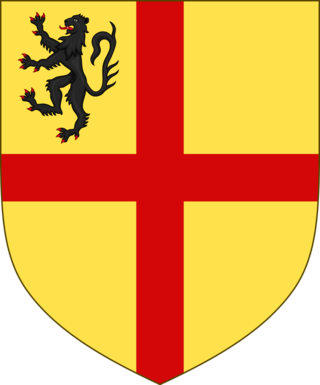
Tomás Burke was an Irish gentleman and soldier who served during the Nine Years' War.
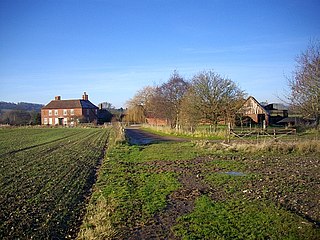
Henry Bright was a clergyman and schoolmaster in Worcester. He served for 38 years Headmaster at The King's School, Worcester, and is mentioned by Thomas Fuller and Anthony Wood as an exceptional teacher, particularly of Latin, Greek and Hebrew. The period was at the height of Neo-Latin writing and Latin medium teaching. Many of his pupils are notable for their faculty in Latin and Greek and their impact on theological matters.
Most prime ministers of the United Kingdom have enjoyed the right to display coats of arms and to this day, prime ministers have their ancestral arms approved, or new armorial bearings granted, either by the College of Arms or the Lyon Court.
Armorial of the speakers of the House of Commons is displayed at the House of Commons in the Palace of Westminster. Speakers customarily take a grant of arms while in office, if they are not armigerous already. Their shields of arms are painted on the interior walls of Speaker's House, and after their elevation to the peerage they are displayed on the windows along the peers' staircase in the House of Lords.
The following is an armorial of the individuals who have served as governor-general of the Commonwealth of Australia.


